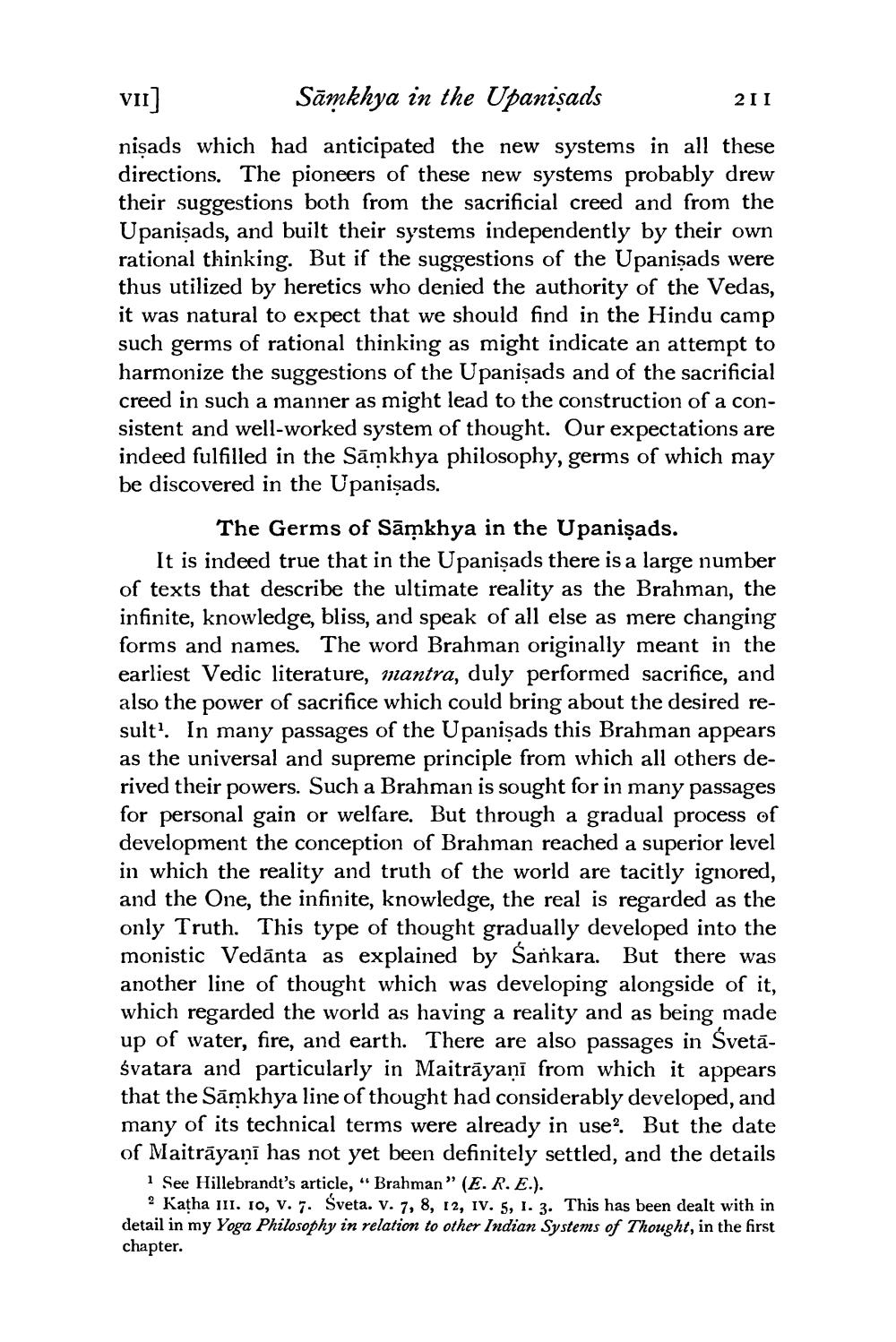________________
VII] Sāmkhya in the Upanisads
211 nişads which had anticipated the new systems in all these directions. The pioneers of these new systems probably drew their suggestions both from the sacrificial creed and from the Upanişads, and built their systems independently by their own rational thinking. But if the suggestions of the Upanişads were thus utilized by heretics who denied the authority of the Vedas, it was natural to expect that we should find in the Hindu camp such germs of rational thinking as might indicate an attempt to harmonize the suggestions of the Upanişads and of the sacrificial creed in such a manner as might lead to the construction of a consistent and well-worked system of thought. Our expectations are indeed fulfilled in the Sāmkhya philosophy, germs of which may be discovered in the Upanisads.
The Germs of Sāmkhya in the Upanişads. It is indeed true that in the Upanişads there is a large number of texts that describe the ultimate reality as the Brahman, the infinite, knowledge, bliss, and speak of all else as mere changing forms and names. The word Brahman originally meant in the earliest Vedic literature, mantra, duly performed sacrifice, and also the power of sacrifice which could bring about the desired result?. In many passages of the Upanişads this Brahman appears as the universal and supreme principle from which all others derived their powers. Such a Brahman is sought for in many passages for personal gain or welfare. But through a gradual process of development the conception of Brahman reached a superior level in which the reality and truth of the world are tacitly ignored, and the One, the infinite, knowledge, the real is regarded as the only Truth. This type of thought gradually developed into the monistic Vedānta as explained by Sankara. But there was another line of thought which was developing alongside of it, which regarded the world as having a reality and as being made up of water, fire, and earth. There are also passages in Svetāśvatara and particularly in Maitrāyaṇī from which it appears that the Sāmkhya line of thought had considerably developed, and many of its technical terms were already in use? But the date of Maitrāyaṇī has not yet been definitely settled, and the details
i See Hillebrandt's article, “Brahman” (E.R. E.).
? Katha III. 1o, v. 7. Sveta. v. 7, 8, 12, IV. 5, 1. 3. This has been dealt with in detail in my Yoga Philosophy in relation to other Indian Systems of Thought, in the first chapter.




